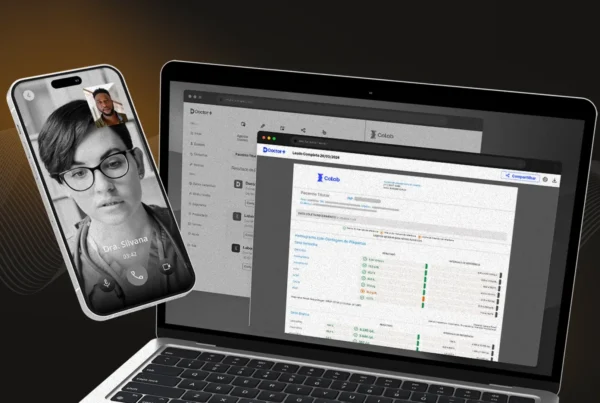Imagine you want to boil some water in a pot. Placing a blowtorch on top of the pot will result in a long, inconvenient and inefficient process. What is ideal in this situation? To place the flame under the pot. The same is going to happen if you try to change the organizational structure of your company: speed and efficiency provides a better result. In other words, let’s talk about digital transformation and lean
But why am I bringing up this analogy? It’s simple! Companies need to change, and the old method – senior management defining and telling the team what should be done – no longer works. And this brings us to the impacts that Digital Transformation and Lean culture provide to a company.
I prepared this article especially because I want to show you how it is possible to structure the organizational model of the future from these two concepts. Let’s go, shall we?
Digital Transformation in times of crisis
Digital Transformation has been seen as a competitive advantage for a long time. The pandemic, however, completely changed this scenario. Nowadays, working with this mindset is a necessity, a basic model to stand out in the market. But what is the role of this concept in your business? It is in the adaptation and value offer.
I’ll explain: in my opinion, there are two paths to be followed. One of them is digitizing the current core business. That is, to be able to update the processes with new technologies, in order to adapt the existing business model. Another path is the use of this concept to generate new revenue streams in the company, expanding business opportunities.
Let’s begin with the impact of the adaptation of internal processes in order to deliver a more complete end product and/or service. I brought an example that will help to make it clear: during the peak of the pandemic, which workers felt comfortable in leaving their houses every day to go to their workplace? I guess not many, right?
What is office work, for example? It is, in practice, an environment where people talk and connect. However, video calls are also an environment where people talk and connect. But when we analyze efficiency, the digital environment offers all these benefits in a faster and more objective way.
A study by Talenses, for example, shows that 70% of the professionals believe that working from home resulted in an increase in productivity. How is that possible? Thanks to the progress made by Digital Transformation. Whether with the quality of the tools available to the employees, or the capacity to perform remote productivity management.
Besides, Digital Transformation opens doors and new opportunities. Now you can have access to a gigantic customer base, something that, in many cases, was not possible before. Digital Transformation has made it possible and has also made room for you to expand your business, generating new revenue streams that will add more value to the core business.
For example, a company that supplies energy can start offering financial services to its customers. After all, it has access to a lot of information and data that can be extremely useful to create an innovative service to its customer base. Greater knowledge about people’s habits and behaviors allows us to create a good competitive advantage.
Lean culture in process optimization
Everything I have spoken about unfolds the right way when the correct methods are defined. Here, I will write about the Lean culture. And I want to emphasize, from the beginning, that understanding the whole methodology is essential, because the details of the process are interconnected.
With this in mind, follow the three topics below. I divided the concept into parts, so you can understand clearly and objectively what adopting this culture means.
Lean methodology
Lean methodology consists of the optimization of internal processes and, therefore, offers high value to what is delivered to the end customer. In practice, it means to reduce the size and waste of the operation in an organization. This applies to the reduction of unnecessary investments and even use of space. Even more important, it makes a difference in the progress and methodology of processes.
A synonym for the word “lean” is “slim”. In the business scenario, it means the need for a robust structure to continue delivering more to customers. The idea of implementing Lean methodology is to identify waste, eliminate it, adapt what is left to the operation, in order to get better results and maintain competitiveness.
Lean leadership
In order to apply the Lean culture inside an organization, it is necessary that leaders also perform a different role. After all, it is not enough only to command your team: it is necessary to lead it to achieve better results. Therefore, Lean leadership should be applied so that the adaptation is made efficiently and shows results.
But what is, in practice, Lean leadership? I personally endorse these characteristics:
- Being a servant leader: to be able to recognize the team’s difficulties, focusing on removing obstacles.
- Engaging the entire workforce: not only by removing obstacles, but also by showing the way and visualizing the steps that need to be taken.
- Having the capability to understand value-generating: to be able to identify how the customer perceives value, and from that refine the business operations.
With this attitude, you will be able to adjust the direction you want to bring your company.
Lean digital
The Lean digital approach represents, in practice, the use of Lean methodology in the Digital Transformation scenario. It is the contextualization of this concept in a world of intense digitalization. It means using the progress technology brings to speed up the processes. Either to do things faster or to have better performance. It is, therefore, a combination of concepts.
The results of this combination
In addition, it is important to understand how Digital Transformation and Lean culture relate and impact the results in the organizations. Because Lean methodology assumes your company is creating value for the customer, everything that is waste should be removed.
Today, thanks to Digital Transformation, it is possible to identify and classify all organizational actions and activities. That means, what does not generate value can be found and, consequently, eliminated from internal processes. The amount of data a company has available, for example, shows how one concept can connect to another.
The dilemma here is to understand that competitors are doing new things faster and faster, and if nothing is changed, the impacts in the results will be significant. What should I do to be as efficient as the competitors? Take advantage of Digital Transformation, because you gain speed safely.
But the purpose of the union between Digital Transformation and Lean culture is precisely to add extra value to what is delivered to the end customer. When well executed, the biggest beneficiary of the strategy is the consumer, who has access to a better and cheaper product and/or service. Waste is reduced, and the focus is on what is important.
The main challenges of the new organizational model
Companies, however, still need to learn to work in this new model, seize the opportunity and forget the idea that things are going to go back to normal. It is time to embrace new tools and solutions. Make an internal evaluation and, following that, decide which processes should be maintained and which ones need to be changed.
It is fundamental that the senior management of the company is also committed to the methodologies. That is, the board, the president, all C-levels should act as role models. Otherwise, people will not behave as expected. The big challenge is to understand that, even in a fast-moving world, we are talking about a journey that will be improved over time.
Imagine that you are on a bicycle, turn the handlebar to one side and the wheel turns the opposite way. Your mind is not prepared, you learned it in a different way. That is what happens when it is time to modify the organizational model. It is necessary to go through an adaptation period until the process becomes efficient again.
After all, the structure of your company is used to working in a certain way, right? Gradually, you are going to learn and embrace the emerging scenario. The management team, for example, was trained in an old method. So, the intermediary management strategy will be to throw away what does not work in the old tools and apply what is new, optimizing and reshaping processes.
Finally, remember that: for Digital Transformation to be successful, you cannot underestimate its complexity. Keep in mind it is difficult to change methods, routines and structures. The effort in behavior change is big. Therefore, the awareness that effort is necessary is part of it, so you don’t get disappointed through the process, and ensures a solid long-term evolution.
Benjamin Quadros – CEO of BRQ Digital Solutions





